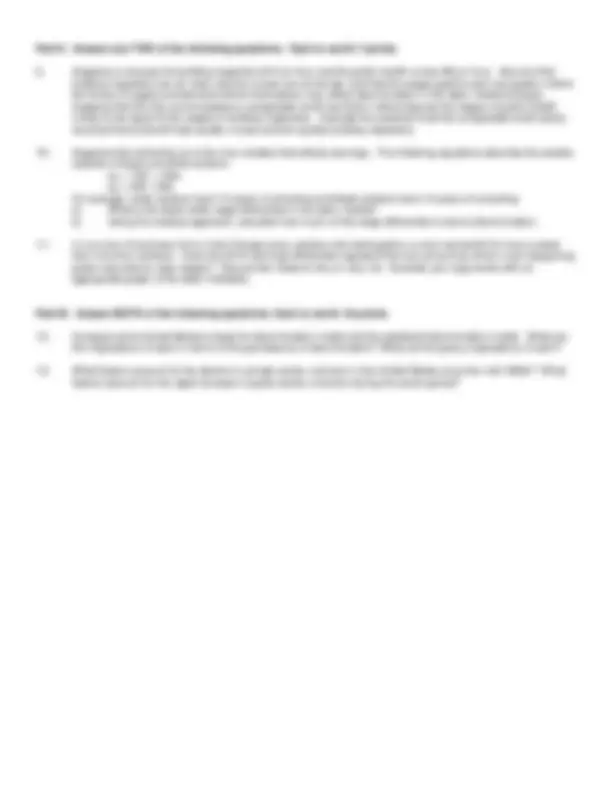
Econ 371 Marietta College
Exam 4 Spring 2007
Part I: Each is worth 2 points.
1. Compared to the 1950s, current union membership as a percent of the labor force in the U.S. is:
a. the same in the private sector and higher in the public sector
b. lower in the private sector and higher in the public sector
c. the same in the private sector and lower in the public sector
d. lower in the private sector and lower in the public sector
2. If the labor market described in the table below is initially in equilibrium, and the union sets a wage of $14,
employment will:
a. fall by 8
b. rise by 12
c. fall by 4
d. not be affected
3. A union’s bargaining power will most likely increase if:
a. its strike fund, which makes payments to union members during a strike, has just been enriched.
b. its strike fund, which makes payments to union members during a strike, has just been depleted.
c. management has just purchased strike insurance, which will make payments to the firm to replace lost profits if
there is a strike
d. management threatens a lockout
4. Which one of the following does not explain why union workers receive more fringe benefits than nonunion
workers?
a. The unionized firm is willing to pay both higher wages and fringe benefits to avoid the costs of a strike
b. The higher incomes of union workers allow them to “purchase” more fringe benefits
c. Unions are primarily composed of younger workers who have more to gain from long-term compensation such as
provided by pension plans
d. As collective voice institutions, unions may better formulate fringe benefit proposals, inform their membership of
their worth, and communicate these desires to the firm
5. Unions may reduce economic efficiency by:
a. providing an “voice” mechanism
b. insisting promotions be based on ability rather than seniority
c. imposing restrictive work rules
d. reducing worker turnover
6. Labor-market discrimination creates a:
a. redistribution of a larger GDP
b. larger GDP but no redistribution
c. smaller GDP but no redistribution
d. redistribution of a smaller GDP
7. Data comparing income by gender and race:
a. provide proof of discrimination when differentials are observed
b. provide proof of no discrimination when average salaries are equal
c. must be interpreted with caution because efficiency loss may be the cause of observed differentials
d. must be interpreted with caution because nondiscriminatory factors may explain all or part of observed
differentials
8. Empirical estimates of the extent of discrimination may be upwardly biased if:
a. certain variables which have a positive effect on productivity are omitted from the study
b. certain variables which have a negative effect on productivity are omitted from the study
c. many of the control variables (such as education or occupation) reflect discriminatory decisions
d. all of the above
Wage Q
Q
$ 6 16 36
8 22 32
10 28 28
12 34 24
14 40 20
16 46 16










